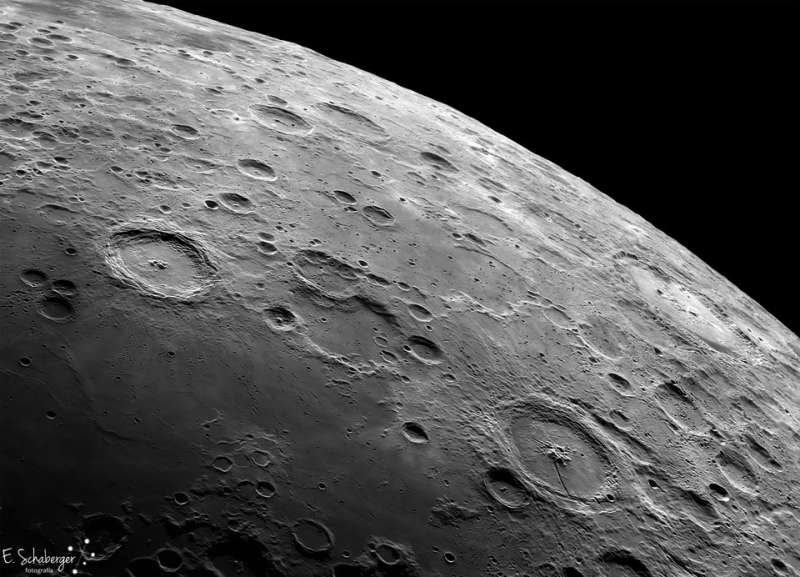
|
Credit & Copyright: Eduardo Schaberger Poupeau
Explanation:
The history of the Moon is partly written in its craters.
Pictured here is a lunar panorama taken from Earth featuring the large craters
Langrenus, toward the left, and
Petavius, toward the right.
The craters formed in separate
impacts.
Langrenus spans about 130 km, has
a terraced rim, and sports a central peak rising about 3 km.
Petavius is slightly larger with a 180 km diameter and has a distinctive fracture
that runs out from its center.
Although it is known that Petravius crater is about 3.9
billion years old, the origin of its large
fracture
is unknown.
The craters are best visible a few days after a
new Moon, when
shadows most greatly accentuate vertical walls and hills.
The featured
image is a composite of the
best of
thousands of
high-resolution,
infrared,
video images taken through a small telescope.
Although mountains on
Earth
will likely erode into soil over a billion years,
lunar craters Langrenus and Petavius
will likely survive many billions more years, possibly until the Sun expands and
engulfs
both the
Earth and
Moon.
Watch:
the November 11 Transit of Mercury
from
Earth or
from
Space.
|
January February March April May June July August September October November December |
| ||||||||||||||||||||||||||||||||||||||||||||||||
NASA Web Site Statements, Warnings, and Disclaimers
NASA Official: Jay Norris. Specific rights apply.
A service of: LHEA at NASA / GSFC
& Michigan Tech. U.
Based on Astronomy Picture
Of the Day
Publications with keywords: Moon - crater
Publications with words: Moon - crater
See also:
- APOD: 2025 August 23 Á Fishing for the Moon
- APOD: 2025 July 20 Á Lunar Nearside
- APOD: 2025 June 28 Á Lunar Farside
- APOD: 2025 June 20 Á Major Lunar Standstill 2024 2025
- APOD: 2025 June 18 Á Space Station Silhouette on the Moon
- APOD: 2025 April 22 Á Terminator Moon: A Moonscape of Shadows
- Moon Near the Edge
